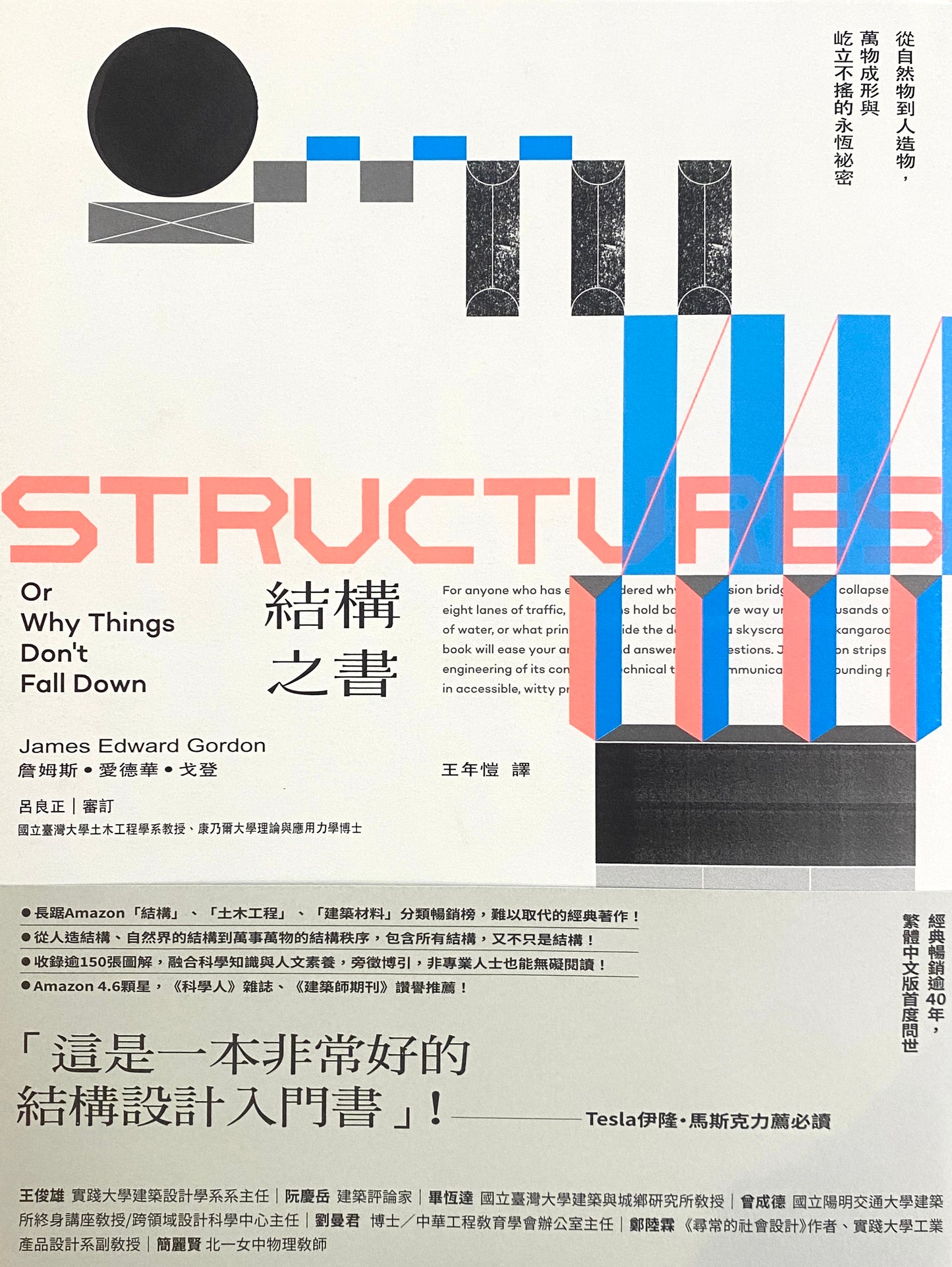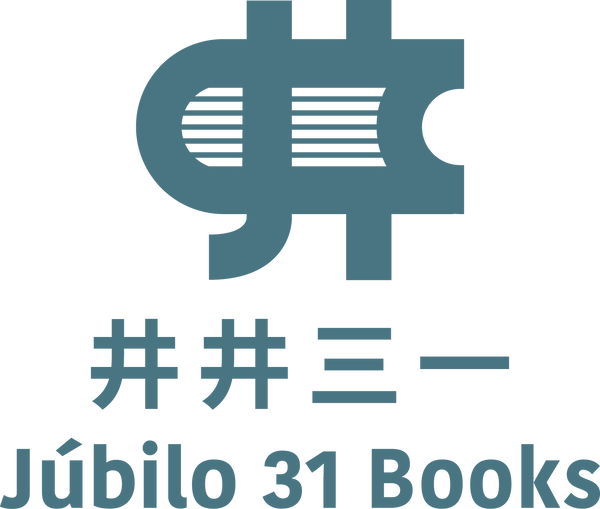1
/
of
1
The Book of Structure: From natural objects to man-made objects, the eternal secrets of the formation and stability of all things
The Book of Structure: From natural objects to man-made objects, the eternal secrets of the formation and stability of all things
Regular price
MOP$166.00
Regular price
Sale price
MOP$166.00
Unit price
/
per
Couldn't load pickup availability
From man-made structures, structures in nature to the structural order of everything, including all structures, not just structures!
The word "structure" is defined by some as "any material combination with load as the goal"; structure-related research is one of the traditional scientific disciplines. If an engineering structure is damaged, someone may die, so engineers do their best to carefully study the response of various structures. But there was a big problem when engineers and others talked about their research topics, because the language they used was so weird that some people were convinced that the study of structures and how they would carry weight was impossible. Something that is incomprehensible, irrelevant, and extremely boring.
However, structure is related to our lives everywhere; after all, all animals and plants, and almost all man-made objects, need to withstand a certain degree of mechanical force without being damaged, so almost everything has some kind of structure. . When it comes to structures, we ask more than just why buildings and bridges collapse, or why machines and airplanes sometimes fall apart; we ask:
․ Why do earthworms grow into that shape?
․ How can a bat fly into a rose bush without having its wings torn off?
․ How do our tendons work?
․ Why do we have back pain?
․ How could a pterodactyl weigh so little?
․ Why do birds have feathers?
․ How do our arteries work?
․ How can we help children with disabilities?
․ Why are sailboat sails made like that?
․ Why is Odysseus' bow so difficult to string?
․ Why did the ancients take off the wheels of their chariots at night?
․ How did ancient Greek trebuchets work?
․ Why do reeds float in the wind?
․ Why is the Parthenon in Athens so beautiful?
․ Can engineers get inspiration from natural structures?
․ What inspiration can doctors, biologists, artists, and archaeologists draw from engineers?
Structures can and do break down, and the breakdown can be significant and sometimes dramatic. Why does the suspension bridge not collapse despite the traffic flow on the eight-lane road? Why can some dams hold tens of thousands of liters of water while others cannot? A skyscraper, a bias-cut dress, or even a kangaroo – what are the design principles behind these objects? These questions have answers in this book.
Whether it's a building, an animal body, an airplane, or an eggshell, this book explains in a popular way the basic principles that underpin everything in the world. Gordon uses witty words, combines his familiar professional talents and encyclopedic knowledge, and explores interesting topics such as "How to design an earthworm" and "There are many benefits of being a beam", allowing readers to gain an in-depth understanding of human beings and the environment. The principle by which nature creates various objects. In addition, this book explains basic concepts such as stress, strain, torsion, fracture, and compression in clear and straightforward terms that even professional architects and engineers can benefit from. Whether you want to build a house, a sailboat, or a trebuchet, this book will help you understand how everything works, from joints, floors, ceilings, hulls, masts, to ancient cathedrals. of flying buttresses.
Want to know the amazing technologies behind the things you use every day, but don’t want to be overwhelmed by jargon? This book is the best guide to explain things in a simple way!
View full details
The word "structure" is defined by some as "any material combination with load as the goal"; structure-related research is one of the traditional scientific disciplines. If an engineering structure is damaged, someone may die, so engineers do their best to carefully study the response of various structures. But there was a big problem when engineers and others talked about their research topics, because the language they used was so weird that some people were convinced that the study of structures and how they would carry weight was impossible. Something that is incomprehensible, irrelevant, and extremely boring.
However, structure is related to our lives everywhere; after all, all animals and plants, and almost all man-made objects, need to withstand a certain degree of mechanical force without being damaged, so almost everything has some kind of structure. . When it comes to structures, we ask more than just why buildings and bridges collapse, or why machines and airplanes sometimes fall apart; we ask:
․ Why do earthworms grow into that shape?
․ How can a bat fly into a rose bush without having its wings torn off?
․ How do our tendons work?
․ Why do we have back pain?
․ How could a pterodactyl weigh so little?
․ Why do birds have feathers?
․ How do our arteries work?
․ How can we help children with disabilities?
․ Why are sailboat sails made like that?
․ Why is Odysseus' bow so difficult to string?
․ Why did the ancients take off the wheels of their chariots at night?
․ How did ancient Greek trebuchets work?
․ Why do reeds float in the wind?
․ Why is the Parthenon in Athens so beautiful?
․ Can engineers get inspiration from natural structures?
․ What inspiration can doctors, biologists, artists, and archaeologists draw from engineers?
Structures can and do break down, and the breakdown can be significant and sometimes dramatic. Why does the suspension bridge not collapse despite the traffic flow on the eight-lane road? Why can some dams hold tens of thousands of liters of water while others cannot? A skyscraper, a bias-cut dress, or even a kangaroo – what are the design principles behind these objects? These questions have answers in this book.
Whether it's a building, an animal body, an airplane, or an eggshell, this book explains in a popular way the basic principles that underpin everything in the world. Gordon uses witty words, combines his familiar professional talents and encyclopedic knowledge, and explores interesting topics such as "How to design an earthworm" and "There are many benefits of being a beam", allowing readers to gain an in-depth understanding of human beings and the environment. The principle by which nature creates various objects. In addition, this book explains basic concepts such as stress, strain, torsion, fracture, and compression in clear and straightforward terms that even professional architects and engineers can benefit from. Whether you want to build a house, a sailboat, or a trebuchet, this book will help you understand how everything works, from joints, floors, ceilings, hulls, masts, to ancient cathedrals. of flying buttresses.
Want to know the amazing technologies behind the things you use every day, but don’t want to be overwhelmed by jargon? This book is the best guide to explain things in a simple way!


